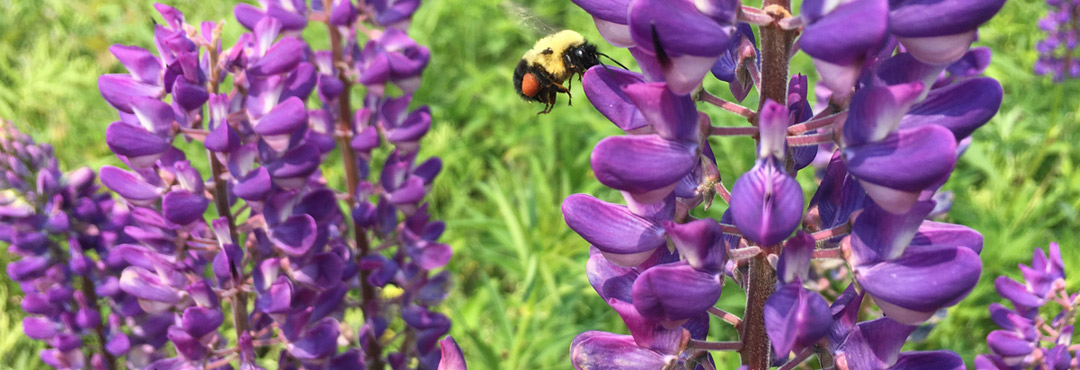Native Plant Installation For Chicago, IL and Surrounding Areas
Native Plants
In Illinois and Wisconsin, native plants occur naturally in a particular habitat, ecosystem, or region without human introduction. Basically, they are the plants that were here before we were! These plants have formed mutually beneficial relationships with native wildlife over thousands of years, and therefore offer the most sustainable habitat and food sources. Native plant species are specifically adapted to local soil and weather conditions and will thrive without assistance once established if planted in the proper location.
Non-native plants that have evolved in other parts of the world or have been cultivated by humans into forms that don’t exist in nature do not support wildlife as well as native plants. Occasionally, non-native or cultivated plants can escape into the wild and become invasive exotics that displace native species and destroy natural habitats.
Types of Native Plants in Illinois and Wisconsin
Native plants are typically defined by the type of habitat they grow in – wetland, woodland or prairie. There are beautiful flowering plants, called forbs, as well as grasses and sedges for each of these habitats.
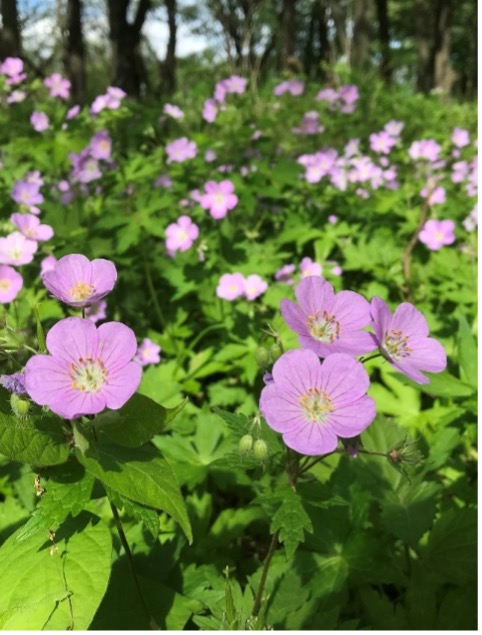
Wild Geranium, a native forb.
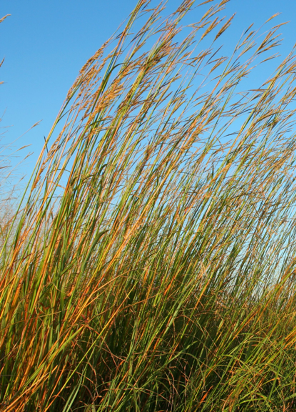
Big Blue Stem, a native grass
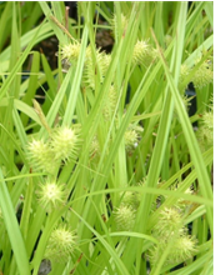
Porcupine Sedge, a native sedge.
Native plants can provide a variety of ecosystem services, commonly defined as the benefits to humans provided by the natural environment and from healthy ecosystems. For example, native plants with especially deep root systems provide important benefits, including:
- Outstanding erosion control – Large, perennial prairie root systems create year-round soil “anchors.” They are especially effective in stabilizing shorelines and preventing loss of soil from farm fields.
- Increased rainfall and runoff infiltration – Healthy, diverse root communities improve soil structure, adding underground air spaces and absorbent organic matter. As a result, water more easily percolates into the soil rather than flowing across the landscape. This helps reduce flooding and keeps sediment out of waterways.
- Carbon sequestration – Mature, undisturbed prairies store more carbon below ground than forests can store above ground, helping to reduce global warming.
- Nutrient reduction – Actively growing prairie roots take up nitrogen and phosphorus that could otherwise pollute our waterways.

Root system of Big Bluestem prairie grass.
Site Preparation
Site preparation is a big part of any successful native seed or plant installation. This may take more than one growing season depending on the amount of non-native plant material present along with any seeds that have accumulated in the soil. If desirable native plant species are present, we make sure to carefully work around these plants while focusing on removing unwanted vegetation.
If the site is small, certain undesirable plants can be removed by hand weeding. For larger sites, the selective use of EPA-approved herbicides is typically recommended. The frequency of herbicide treatments depends upon site conditions, species present, and the presence of a seed bank within the soil. Repeat applications may be required before native seed or plants can be installed. It should be noted that prescribed burning can sometimes be used to prepare a site, but this practice is most often used to maintain an established natural area.
Native Plant Installation
The timing for installation depends on whether we are installing seed or live plants. The optimal time to install native seed is from the fall to late spring (September to early June). Some native seed species require consistent exposure to cold, called cold stratification, to germinate in the spring. Often, a temporary cover crop is included in the seed mix to provide soil stabilization while we wait for the native plants to grow. If no cover crop is used, other erosion control measures like erosion control matting may be installed.
Live plants are planted during the growing season, between May and late September. Spring plantings are preferred in order to give the plants ample time to develop enough of a root system to withstand summer heat and droughts. Otherwise, careful attention to watering is required throughout the summer months. Trees and shrubs are typically planted in the fall after the plants have gone dormant in order to reduce transplant shock.
Caring for Native Plants After Installation
Maintenance of newly planted natural areas again depends on whether you installed seed or live plants. Native seed typically takes about three years to develop into flowering native plants. During this time, native plants put most of their energy into growing their root systems and so mowing is recommended to suppress non-native annual plants without negatively impacting natives. Mowing allows for more light to reach new native seedlings while preventing fast-growing annuals from reseeding.
We suggest mowing at least three times during the first growing season at a height of ten inches. As the native plants become better established less mowing is required each year. Careful herbicide applications should also be utilized during the first few years of establishment. Caution is taken to avoid overspray onto any native species. Selective herbicides can be used to only target nonnative forbs; these will have no effect on grasses. Grass-specific herbicides can be utilized to treat nonnative grasses; these will have no effect on forbs.
Once the native seed has grown into established plants or after installing live plants, maintenance involves removing weeds by hand for small sites or selective herbicide application and/or prescribed burning for larger sites. ILM’s staff is trained and licensed to apply herbicide in order to safely and selectively target non-native plant species while taking extreme caution to avoid desirable native plants.
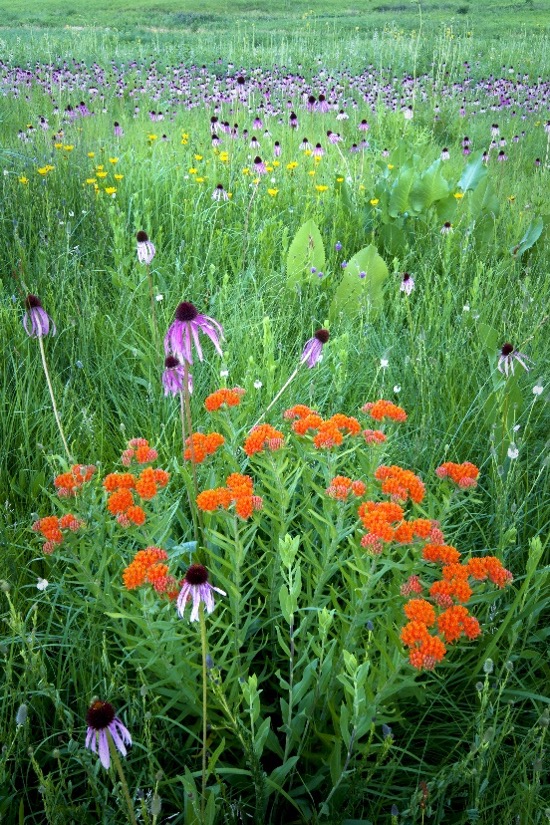
Established prairie.
Prescribed burns are recommended every two or three years after a newly installed natural area matures. Prescribed burning mimics historic fire regimes that native plants are adapted to. Fire returns nutrients back into the soil and clears chaff, giving native plants more elbow room to grow. The blackened soil also absorbs and retains heat, giving plants a spring head start. ILM staff are trained and licensed to perform prescribed burns.
Since native plants are specifically adapted to the soils in which they are planted, fertilizing is not needed. We do often recommend overseeding or supplemental planting a few years after a new planting in order to increase plant diversity.

Hundreds of species of insects rely on native plants.
Learn More About Our Native Plant Installation Service
Contact ILM today to schedule a consultation on our native plant installation services in Illinois and Wisconsin. We can also provide holistic strategies to care for your environment. We are happy to help you improve the beauty and health of your lake, pond, wetland, woodland, or prairie.

